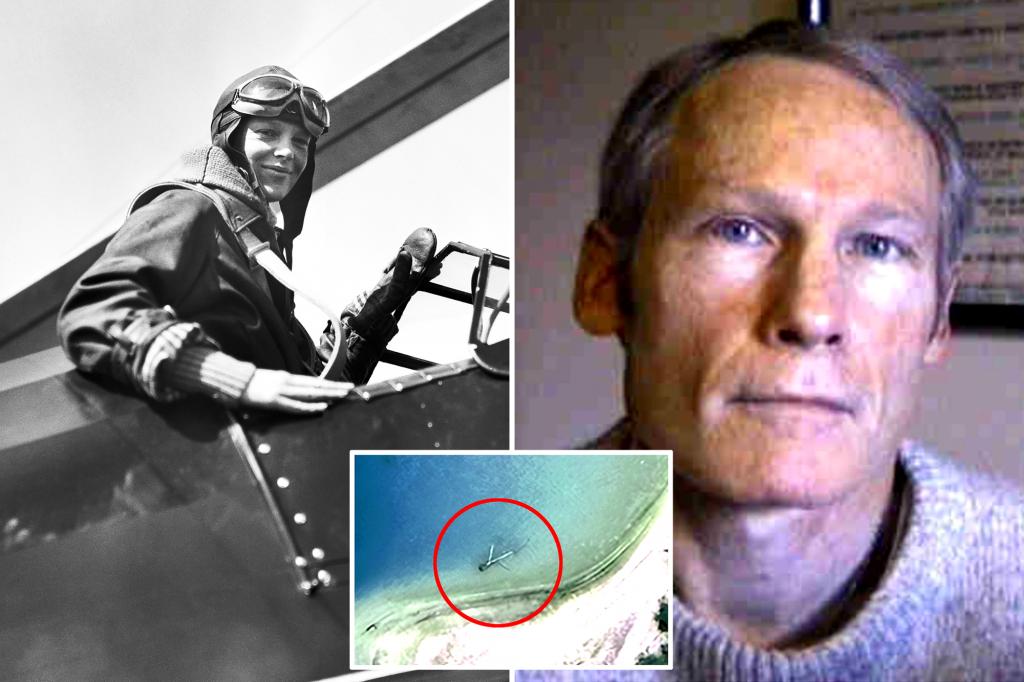The enduring mystery of Amelia Earhart’s disappearance continues to captivate the world, even after nearly nine decades. In the summer of 2024, Dr. Richard Pettigrew, an archaeologist based in Oregon, is leading a new expedition to Nikumaroro Island in the western Pacific, hoping to finally locate the wreckage of Earhart’s Lockheed 10-E Electra and solve the puzzle that has baffled researchers for 88 years. Pettigrew’s venture is the latest in a long line of attempts, fueled by compelling theories and tantalizing clues, yet none have yielded definitive proof. His expedition stands out, however, due to a specific visual anomaly identified through advanced imagery analysis, giving this search a renewed sense of hope.
Dr. Pettigrew, executive director of the Archaeological Legacy Institute, has meticulously analyzed satellite imagery, video footage, and drone data, culminating in the identification of a metallic, reflective anomaly near the Taraia Peninsula on Nikumaroro’s north shore. This anomaly, dubbed the “Taraia Object,” corresponds with Pettigrew’s hypothesis regarding the final resting place of Earhart’s aircraft. He posits that after running into difficulties, Earhart may have successfully landed her plane on the northwestern reef flat of Nikumaroro. The aircraft, according to Pettigrew’s theory, subsequently sank alongside the Taraia Peninsula, becoming gradually embedded in and concealed by sediment deposited by the ocean currents.
The Taraia Object’s significance lies in its potential to be the long-sought-after wreckage of Earhart’s plane. Pettigrew believes that the aircraft remained hidden until powerful storm currents unearthed it in 2015. While the object has become less distinct over time due to the dynamic underwater environment, its location in relatively shallow water offers a viable target for investigation. Furthermore, research has unveiled what appears to be the same object in aerial photographs captured by the New Zealand military in 1938, lending further credence to Pettigrew’s theory. This convergence of evidence, from modern satellite imagery to historical photographs, provides a compelling basis for the upcoming expedition.
Amelia Earhart, a celebrated aviation pioneer, vanished along with her navigator, Fred Noonan, in 1937 during their ambitious attempt to circumnavigate the globe. Taking off from Lae, Papua New Guinea, their intended route included a refueling stop at Howland Island before continuing to Honolulu and finally Oakland, California. However, strong headwinds and communication difficulties plagued their journey. Earhart’s final radio transmissions offered little concrete information about their location, leaving search and rescue efforts grasping at straws. Despite an extensive 16-day search by the US Navy and Coast Guard, no trace of the aircraft or its occupants was found. Earhart was officially declared dead in 1939, leaving a void in aviation history and sparking decades of speculation.
Over the years, numerous expeditions have sought to uncover the truth behind Earhart’s disappearance, each fueled by varying theories and employing diverse methodologies. Millions of dollars have been poured into these endeavors, but the ultimate fate of Earhart and Noonan has remained elusive. Recent expeditions, such as the one led by deep-sea explorer Tony Romeo, have employed advanced sonar technology, but even these have met with disappointment. Romeo’s discovery of an aircraft-shaped object, initially believed to be Earhart’s plane, was later confirmed to be a natural rock formation. These setbacks highlight the challenges inherent in searching the vast expanse of the Pacific Ocean and underscore the need for meticulous analysis and interpretation of data.
One persistent theory suggests that Earhart and Noonan landed on Nikumaroro, a remote coral atoll, and subsequently perished as castaways. This “Nikumaroro Hypothesis,” supported by The International Group for Historic Aircraft Recovery (TIGHAR), has gained traction over the years, and Dr. Pettigrew himself acknowledges the compelling nature of the evidence gathered by TIGHAR. His own previous involvement in Nikumaroro expeditions has fostered a deep respect for this theory. However, definitive proof, such as DNA evidence or irrefutable aircraft debris, has remained elusive. Pettigrew’s current expedition aims to finally provide that conclusive evidence by focusing on the Taraia Object as the key to unlocking the mystery. He believes that a thorough examination of the object will either confirm or refute the hypothesis, potentially bringing closure to this enduring enigma.
Dr. Pettigrew’s forthcoming expedition represents a significant step in the ongoing quest to discover Amelia Earhart’s fate. While acknowledging the long history of fruitless searches, Pettigrew expresses cautious optimism, emphasizing his approach as a professional archaeologist. His team’s meticulous analysis of imagery and the identification of the Taraia Object suggest a tangible lead in the search. Should the expedition secure the necessary funding and proceed as planned in August, the world may finally receive answers to one of history’s most enduring aviation mysteries. The examination of the Taraia Object holds the potential to either confirm the Nikumaroro Hypothesis, revealing the final resting place of Earhart’s aircraft, or prompt a reassessment of prevailing theories, leading the search in new directions. Either outcome represents a significant advancement in the quest to solve the enduring riddle of Amelia Earhart’s disappearance.

